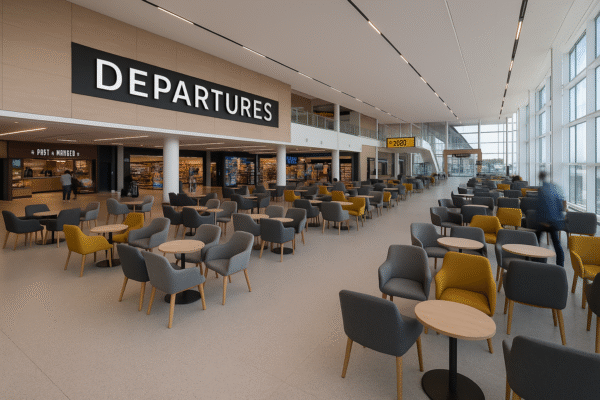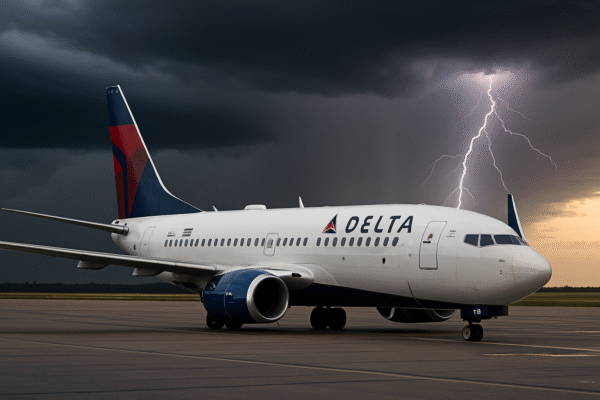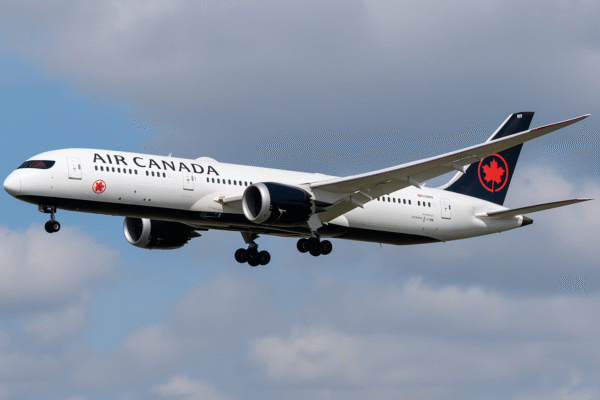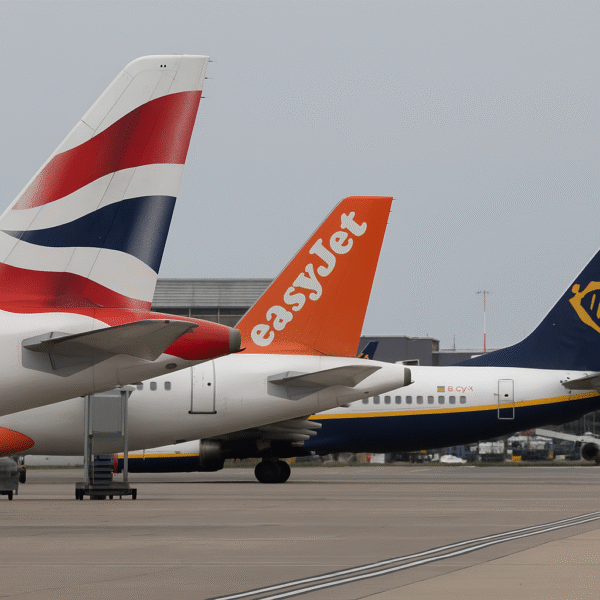The UK’s aviation network experienced a significant operational failure this week following a technical malfunction at the National Air Traffic Services (NATS) control center located in Swanwick, Hampshire. The disruption led to a near-total standstill of outbound flights and considerable delays at key international airports, including London Heathrow (LHR), London Gatwick (LGW), and Manchester Airport (MAN). With travel demand peaking during the summer season, the glitch left thousands of passengers stranded, causing ripple effects across domestic and international routes.
Technical Fault Grounds Flights Across UK Skies
The core issue stemmed from a data processing fault within the NATS air traffic control system, prompting authorities to restrict UK airspace operations to ensure safety. Departures were suspended for several hours, and while engineers resolved the issue later in the day, the backlog of affected flights meant delays and cancellations continued well into the night.
According to NATS, this system failure was not related to a cyberattack or external interference but was purely technical. However, the outage highlights vulnerabilities in the UK’s aviation infrastructure—especially during high-traffic travel windows such as summer and holiday periods.
Major Airports Affected: Heathrow, Gatwick, Manchester
Heathrow Airport, the UK’s busiest aviation hub, experienced significant disruption. Numerous flights were delayed or canceled altogether, particularly those scheduled for takeoff during the early afternoon. British Airways, Virgin Atlantic, and other key carriers were forced to rearrange flight plans, with many short-haul routes facing last-minute cancellations.
Gatwick Airport similarly faced operational chaos, as several flights were grounded, and arrivals were redirected. Passengers heading to European cities like Paris, Barcelona, and Amsterdam experienced prolonged delays or rebookings onto evening services.
Manchester Airport, a vital northern gateway, also reported cascading delays. Regional flights to Scotland, Ireland, and mainland Europe were affected, with many outbound travelers missing their connecting flights abroad.
Disruptions Ripple Through Europe and Beyond
The air traffic system disruption did not just impact the UK. European airspace was indirectly affected due to delays in aircraft transiting through British routes. Airports in Dublin, Amsterdam Schiphol, and Frankfurt reported scheduling conflicts as they attempted to accommodate stranded UK-bound travelers.
Flights to the Middle East and North America—especially to cities like New York, Dubai, and Toronto—were delayed, causing significant frustration among long-haul passengers, business travelers, and tourists alike. Airlines including Emirates, Lufthansa, and American Airlines had to quickly communicate contingency plans, adding further strain on airport personnel and airline call centers.
Impact on Tourism and Hospitality Sectors
With international tourism rebounding post-pandemic, the timing of this technical fault couldn’t have been worse. Travelers en route to UK cities such as London, Manchester, Bristol, and Edinburgh for holidays, business events, or festivals were delayed, often missing prepaid excursions, hotel bookings, and event schedules.
Tourism operators and hoteliers scrambled to accommodate changes. Many local attractions saw reduced attendance, while hotels near major airports experienced a surge in overnight stays by stranded passengers—stretching available resources.
According to VisitBritain, the UK tourism sector had been anticipating record summer arrivals from the U.S., Europe, and Asia. But incidents like this raise concerns among travelers about system resilience and reliability.
Airline and Airport Responses
Airlines implemented emergency operations protocols, offering rebookings, meal vouchers, and in some cases, overnight accommodations. However, the overwhelming volume of affected passengers made it difficult to meet demand efficiently.
Airport authorities coordinated with NATS and government departments to communicate with travelers via social media, digital signboards, and airline apps. Passengers were urged to monitor flight statuses and avoid heading to the airport without confirmation of rescheduled departures.
Despite efforts to normalize services, experts say the full recovery of air schedules may take up to 48 hours, particularly for long-haul carriers needing to reposition aircraft.
Government and Industry Reaction
UK Transport Secretary Mark Harper expressed “deep concern” over the disruption and has called for an inquiry into the NATS failure. Discussions are underway between the Department for Transport, Civil Aviation Authority, and NATS leadership regarding future infrastructure investment and redundancy planning.
Industry leaders at Airlines UK and the International Air Transport Association (IATA) also emphasized the importance of modernizing air traffic management systems. As aviation demand continues to grow, the need for updated fail-safe systems and cross-border coordination becomes more urgent.
What Travelers Should Do
- Check Flight Status: Before heading to the airport, travelers are advised to confirm departure times using airline apps or airport websites.
- Plan Alternative Transport: Where possible, consider rail or coach services, especially for domestic travel, while flights stabilize.
- Travel Insurance: Ensure your policy covers delays, cancellations, and missed connections. Retain receipts for reimbursements.
- Stay Informed: Follow airport and airline social media for real-time alerts.
Conclusion: A Critical Wake-Up Call for UK Aviation
This week’s widespread flight disruption is a sobering reminder of the challenges modern aviation systems face. With climate events, labor unrest, and now technical failures increasingly impacting global travel, resilience and preparedness are no longer optional—they are essential.
The UK must now act decisively to bolster its air traffic control infrastructure, ensuring it can support the growing demands of international tourism and protect its reputation as a reliable travel hub.
As flights gradually return to normal, passengers are urged to remain flexible and patient. The travel industry, meanwhile, must learn from this incident to ensure smoother skies ahead.
For more travel news like this, keep reading Global Travel Wire




















